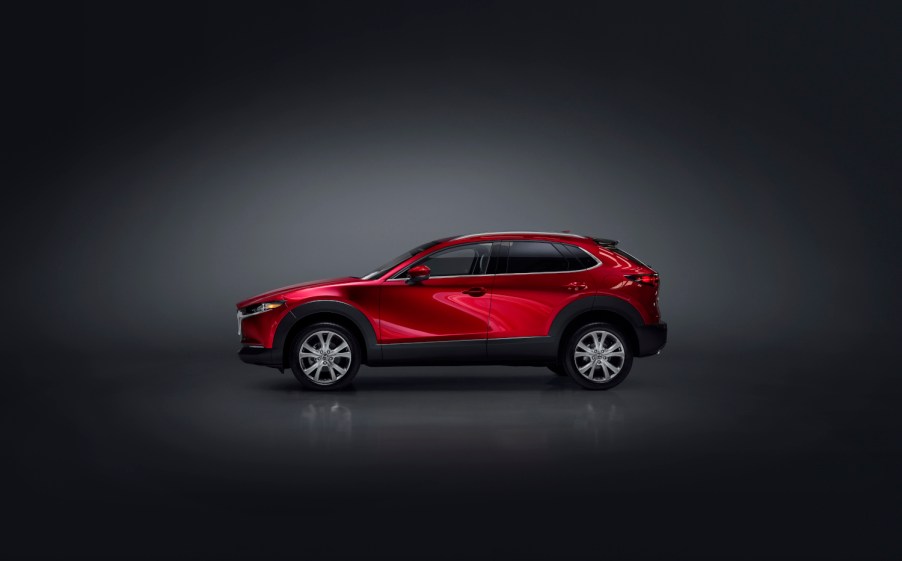
Only 2 Mazda Models Are on the Decline in 2023
Mazda cars are known for both their fuel-efficient powertrains and sporty driving manners, so most of them are quite popular amongst consumers. The company has seen impressive year-over-year sales growth across its lineup, minus two exceptions. How do those two SUVs compare to Mazda’s most popular one?
The Mazda CX-5 continues to outshine its siblings
Just like last year, about 116,000 Mazda CX-5 models were sold over the course of nine months. The Mazda CX-30 is the automaker’s most popular entry in the subcompact segment with approximately 59,302 units sold so far. The Mazda 3 and Mazda CX-50’s sales aren’t nearly as high, but both manage to pull their own weight in their respective segments.
In contrast, the Mazda CX-9’s sales have dropped by almost 26% from a year-to-date perspective. Only 12 people bought one in September 2023, as documented by GoodCarBadCar. The Mazda MX-30’s best month of this year was July, during which it managed to sell 28 units.
Is something wrong with the Mazda CX-9?
The Mazda CX-9 has all the hallmarks that make this brand so appealing, such as a turbocharged engine with standard all-wheel drive. However, as a three-row midsize SUV, it comes up short in the areas that matter the most. The third row doesn’t even have 30 in of legroom and the minimum cargo capacity sits at 14 cu-ft. Third-row seat access is also difficult unless you opt for the second-row captain’s chairs.
It’s worth noting that 2023 is the last model year for the CX-9, so there might not be much stock left. The CX-9 was replaced with the CX-90, which started making its appearance on dealership lots in April. By the end of September 2023, over 15,000 buyers had already purchased a CX-90.
The Mazda CX-90 is about the same size as the CX-9, but it’s built on a different platform. Cargo capacity has only increased by a few cubes and the third row is just a smidge bigger. Buyers are likely more interested in the CX-90’s improved powertrain options.
Instead of a turbo-four engine, the CX-90 gives drivers a turbo-inline-six engine paired with a mild-hybrid system. You can still get a turbo-four attached to an electric motor on the PHEV model, which promises 25 miles of range.
The Mazda MX-30 had a rough time from beginning to end
While the CX-90 has a lot of high points, the Mazda MX-30 barely has any. Drivers looking for turbo power will be disappointed by the MX-30’s unassuming electric motor with just 143 hp on tap. While Car and Driver was pleased the the MX-30’s handling, it’s still predictably slower than its siblings. Front-wheel-drive is standard and AWD is not available for either of the MX-30’s two trims. With just 100 miles of electric range, the MX-30 never really had a chance to compete with its rivals.
The Mazda MX-30’s interior is made from high-quality sustainable materials, including leather-like trim for the seats. Drivers have plenty of room to get comfortable, though the bulky roof pillars impede visibility. The rear doors are about half the size of the front ones, so the back row is annoying for most passengers to access. Cargo capacity with every seat up is shockingly decent at 21 cu-ft.
The MX-30 is currently only sold at California Mazda dealerships, which only hurts its popularity even more. Mazda has announced that it will kill the MX-30 after the 2023 model year, saving this SUV from another several months of embarrassing sales. The automaker also canceled its plans to bring over the PHEV version from across the pond. With the bar for consumer appeal so low, any Mazda EV replacement should be met with positive reception saleswise.


